More minimalist running shoes creates greater potential for issue with the ball of the foot, notably around the second metatarsal joint. Find out about the symptoms, causes and treatment of metatarsal issues in runners.
There is a move in the shoe world towards more minimal type of shoes. This involves less cushioning and this leads to greater impact through the sole of the foot and in particular the ball. Further having spent the winter in cushioned shoes, the minimal protection of spikes on a hard surface like the track can create a common issue with the ball of the foot such as Metatarsalgia and possibly a Morton’s Neuroma.
Where is pain commonly felt?
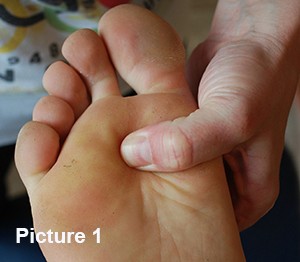
The most common area is around the second metatarsal joint. This is next to the big toe (as shown in Picture 1) and can bear the brunt of any increased impact.
What type of pain?
The type of pain felt is a bruising tenderness of the joint. When the nerve is involved there is often burning and pins and needles. This can develop into more constant numbness and nerve type pain. There are two nerves that run either side of each toe and these can become squashed between the joint/bone and the ground. This causes nerve damage and dysfunction and, if not corrected, can lead to permanent nerve damage in the form of a Morton’s Neuroma. However, this is the extreme outcome and most settle without any issues.
The second metatarsal can develop bone stress and can become inflamed in the joint - it can develop tendonitis and can pinch the nerves as mentioned above or it can do all of these at the same time!
Bone stress tends to be a more permanent ache in the bone rather than the joint. Inflammation of the joint is felt on top as well as underneath the joint. Nerve pain is felt mostly just on weight bearing but also is accompanied by the burning nerve symptoms.
Causes of metatarsal pain
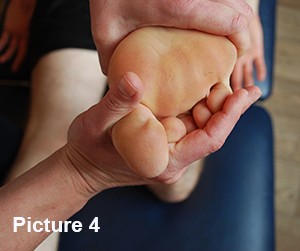
We are all built differently but a common issue is that the second metatarsal can be quite a bit longer than the first and this leads to it being pushed up into a claw like shape in a shoe. This has the effect of driving the ball of the joint (as shown in Picture 4) down into the shoe and the ground. The forces which drive the toes into the end of the shoe are apparent in the bruised, bent and bloody toes offered to me every day in my clinic.
The bending of the toe at the joint in the middle has the effect of stopping the tendon that runs under the foot from stretching out and it becomes shortened, permanently. The joint then becomes fixed. This bent toe position then affects the metatarsal joint (Picture 1) and has the effect that when you roll through the foot, driving the metatarsal joint or ball of the foot down into the ground, it thus squashes the structures that are in the way (as illustrated by the red arrow in Picture 3.)
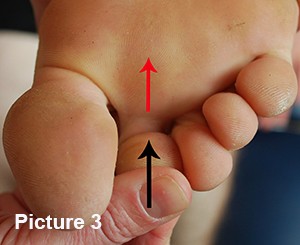
The toe can become stuck like this through tightness in the tendon but then through stiffness in the joints. So, stretching the tendons and joints from their fixed positions is essential for proper function of the foot.
Self-treatment
The treatment is to firstly stretch out the second toe joints and tendons to allow proper use of the joint.
Hold the foot pulled up at the ankle (like a calf stretch) and then straighten the toe out as much as possible and pull it up (as in Pictre 2.)
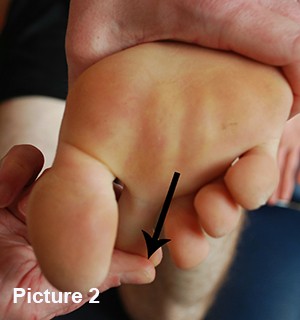
Try to stop the ball of the foot from moving down away from you. Do this for two minutes and four times a day. If in doubt, seek help from a running specialist physiotherapist.
Sometimes the joint become chronically lax and although orthotics can be useful these should only be used in conjunction with proper advice and treatment on altering the toe mechanics. They are not a solution in their own right.
Additional help can be found from simple pads placed behind the ball of the foot to lift the arch. Picture 5 shows the pad placement well behind the ball of the foot – the metatarsal joint.
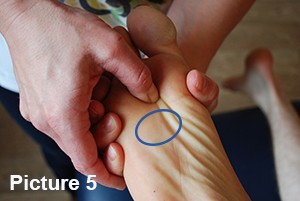
Further looking at your mechanics and calf length in particular is useful.
Word of warning
If the symptoms, particularly the nerve symptoms such as pins and needles and burning does not settle within a week or so then you must reduce or even stop running and seek help. Be aware, that to continue running there is a risk of permanently damaging the nerve. Ultimately this can then require injections or surgery.















